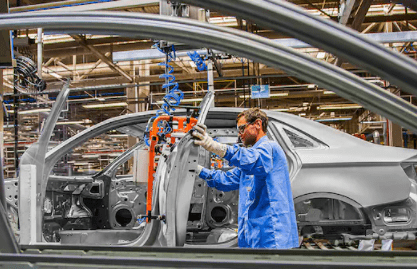An analysis by the US Congress describes some of the costs of the new rules of origin in the automotive sector of the Treaty between Mexico, the United States and Canada (USMCA).
The USMCA automotive rules of origin began to be phased in in early 2021 to give importers and producers time to adapt to the more restrictive measures.
During the negotiations, vehicle and parts manufacturers generally supported maintaining the current rules of origin under the North American Free Trade Agreement (NAFTA, predecessor to the USMCA), while labor groups sought to demand a percentage higher regional content, which, in his opinion, would reduce the proportion of parts produced in non-NAFTA countries.
Some observers claim that it is «unclear» whether the USMCA’s automotive rules of origin meet the requirements of Article XXIV of the World Trade Organization (WTO) General Agreement on Tariffs and Trade.
Article XXIV establishes that tariffs and other commercial regulations between the parties to a customs union «should not generally be higher or more restrictive» than the rate of duties and regulations «applicable in the constituent territories before the formation of said union”.
Also, based on the analysis, some economists and other experts believe that the increased North American content requirement in the USMCA is likely to have unintended consequences.
They contend that the motor vehicle trade within North America may not meet the new requirements and may not be eligible for USMCA benefits.
Rules of origin
The Congressional Budget Office (CBO) estimated that the USMCA’s stricter rules of origin for motor vehicles and new wage requirements will lead to a decrease in duty-free imports of motor vehicles and parts in the United States.
A part of this decrease would be replaced by domestic production, while a part would be replaced by dutiable imports.
In addition, the CBO estimates that US importers of cars and parts that do not meet the requirements of the stricter rules of origin will pay approximately $ 3 billion in tariffs over the next decade.
Other economists also argue that it would be more profitable for manufacturers of motor vehicles and auto parts to pay the MFN tariff of approximately 2.5%, rather than meet the cumbersome requirements of rules of origin.
They argue that a rule change poses a significant risk to North American auto production, because new content requirements are likely to increase production costs, resulting in higher car prices, lower demand for United States and lower auto exports.
Mexico vs Korea
Automakers in Mexico are concerned that they may lose market share to Asian automakers.
For example, because the rules of origin in the FTA between the United States and South Korea are much lower than those of the USMCA, it is possible that some motor vehicle producers would shift production to South Korea, especially in light trucks.
Even with these concerns, some motor vehicle producers support the USMCA, saying that complying with the new rules of origin can be challenging, but probably manageable.
![]()

